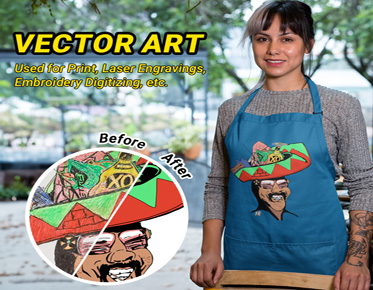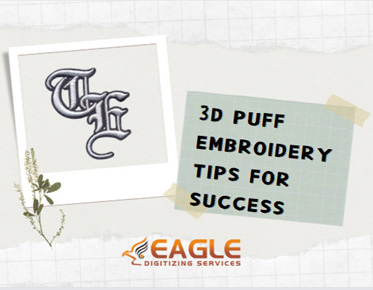Transforming Pixels: Why Raster-to-Vector Conversion is Essential
In the realm of digital design and production,
the conversion of raster graphics to vector format
has emerged as a fundamental process. This article explores the significance of
raster-to-vector conversion and its impact on various industries.
Raster-to-vector conversion, often regarded as a technical process, holds profound implications for digital artistry and design. By understanding the essence of this conversion and its practical applications, we can harness its power to elevate our creative endeavors to new heights.
Definition
and Characteristics
Raster graphics, the bedrock of digital
imagery, are composed of a grid of pixels, each imbued with color values that
collectively form an image. These pixels, akin to the building blocks of a
digital canvas, combine to create intricate visuals, from photographs to digital
paintings.
At the heart of raster graphics lies their resolution-dependent nature. The quality of a raster image is contingent upon its resolution, with higher resolutions yielding sharper details and smoother transitions between colors.
Limitations
of Raster Graphics
While raster graphics excel at capturing
intricate details, they harbor inherent limitations, particularly in terms of
scalability. Enlarging a raster image beyond its original resolution leads to
pixelation, where individual pixels become discernible, detracting from the
overall visual fidelity.
Picture a photograph blown up to billboard size; as the image expands, the once-seamless transitions between colors give way to jagged edges and pixelation. This limitation restricts the versatility of raster graphics in tasks requiring scalability and precision.
Definition
and Characteristics
Vector graphics, the elegant counterpart to
raster images, eschew pixels in favor of mathematical equations to define
shapes and lines. Each element in a vector graphic is represented by
mathematical properties, allowing for infinite scalability without loss of
quality.
Unlike raster images, where each pixel dictates a specific color, vector graphics are defined by their inherent mathematical precision. This precision enables vectors to maintain clarity and sharpness at any size, making them indispensable for tasks requiring scalability and precision.
Advantages
of Vector Graphics over Raster Graphics
The superiority of vector graphics lies in
their versatility and scalability. Imagine a logo that needs to adorn a
business card and a billboard; a vector version retains its sharpness and
integrity across all sizes, ensuring consistent branding and visual impact.
Beyond scalability, vector graphics offer precise control over elements, facilitating seamless editing and manipulation. Whether it's adjusting shapes, colors, or effects, designers wield unparalleled creative freedom with vectors.
Overview
of the Conversion Process
Raster-to-vector conversion involves the meticulous tracing of raster images to create vector equivalents. This process demands attention to detail to ensure the accurate reproduction of shapes and lines, preserving the integrity of the original image.
Tools
and Techniques Used
From automated tracing algorithms to manual tracing by skilled designers, various tools and techniques are employed in raster-to-vector conversion. Each method has its merits, chosen based on the complexity of the image and the desired level of precision.
Graphic
Design and Illustration
Raster-to-vector conversion finds widespread use in graphic design and illustration, particularly in tasks such as logo vectorization and image cleanup. By converting raster images to vectors, designers can achieve crisp, scalable graphics suitable for diverse applications.
Architectural
and Engineering Drawings
In architecture and engineering, raster-to-vector conversion facilitates the digitization of hand-drawn sketches and the creation of precise CAD drawings. This vector conversion process ensures accuracy and consistency in architectural and engineering designs, streamlining the production workflow.
Textile
and Embroidery Design
In the textile and embroidery industry, raster-to-vector conversion is essential for translating intricate designs into embroidery-ready vector files. By converting raster images to vectors, designers can optimize designs for embroidery machines, ensuring precise reproduction of fabric.
Scalability
and Resolution Independence
Raster-to-vector conversion enables images to be scaled up or down without loss of quality, making them suitable for various applications. Whether it's a small logo on a business card or a large banner, vector graphics maintain clarity and sharpness at any size.
Enhanced
Editing Capabilities
Vector graphics offer superior editing capabilities compared to raster graphics. Each element in a vector image is a distinct entity, allowing designers to manipulate shapes, colors, and effects with precision and ease, fostering creativity and experimentation.
Reduced
File Size
Vector graphics typically have smaller file sizes compared to raster images, making them easier to store, share, and transmit. This reduction in file size conserves storage space and facilitates faster transmission of files, enhancing efficiency and productivity.
Complexity
of Conversion Process
Raster-to-vector conversion can be complex, especially for images with intricate details or irregular shapes. Achieving accurate conversion requires skilled professionals and specialized software, highlighting the importance of expertise and precision in the process.
Quality
and Accuracy
Maintaining quality and accuracy during the conversion process is paramount to ensure the fidelity of the vector output. Any deviation from the original raster image can compromise the quality of the vector output, undermining the purpose of the conversion. Therefore, meticulous attention to detail and rigorous quality control measures are essential to uphold the integrity of the converted vector graphics.
Eagle Digitizing is a leading provider of raster-to-vector conversion services, offering high-quality solutions tailored to the needs of various industries. With two decades of experience and expertise, Eagle Digitizing delivers superior results that exceed expectations.
Services Offered
- Vector Art Conversion: Eagle
Digitizing specializes in the meticulous conversion of raster images to
vector art, ensuring faithful reproduction and scalability without
compromise. From intricate logos to complex illustrations, Eagle
Digitizing delivers superior results tailored to the unique requirements
of each project.
- Image and Logo Vectorization: With expertise in image and logo vectorization, Eagle Digitizing
transforms pixelated images into crisp, scalable vectors suitable for a
myriad of applications. Whether it's refining a company logo or enhancing
a digital illustration, Eagle Digitizing ensures unmatched clarity and
precision.
- Vector Tracing: Leveraging
advanced techniques and skilled professionals, Eagle Digitizing offers
precise vector tracing services. From
architectural blueprints to intricate designs, every element is
meticulously traced to maintain fidelity and accuracy in the vector
output.
- Artwork Cleanup and More: Beyond mere conversion, Eagle Digitizing provides comprehensive artwork cleanup and enhancement services. From removing imperfections to enhancing details, every image undergoes a transformation that elevates its visual impact, ensuring unparalleled quality and professionalism.
Benefits
of Choosing Eagle Digitizing
By entrusting your raster-to-vector conversion needs to Eagle Digitizing, you gain access to a plethora of benefits:
●
Superior Quality: Eagle Digitizing delivers
results that surpass expectations, ensuring the highest standards of quality
and precision in every project.
●
Fast Turnaround Times: With efficient
workflows and dedicated professionals, Eagle Digitizing offers fast turnaround
times without compromising on quality.
●
Personalized Service: Eagle Digitizing
provides personalized service tailored to your specific requirements, ensuring
a seamless and satisfactory experience from start to finish.
● Expertise and Reliability: With two decades of experience and a proven track record of success, Eagle Digitizing is a trusted partner you can rely on for all your raster-to-vector conversion needs.
In conclusion, raster-to-vector conversion is a transformative process that enhances the versatility, precision, and efficiency of digital design and production. From scalability and enhanced editing capabilities to reduced file sizes, the benefits of raster-to-vector conversion are undeniable. Embracing this process empowers designers and industries to push the boundaries of creativity and innovation, unlocking new possibilities in digital imagery.
Ready to experience the transformative power
of raster-to-vector conversion? Contact Eagle
Digitizing today to learn more about our vector art services and take the first
step toward unlocking the full potential of your digital imagery. Let us be
your trusted partner in converting pixels into vectors and turning your
creative vision into reality.


.jpg)
